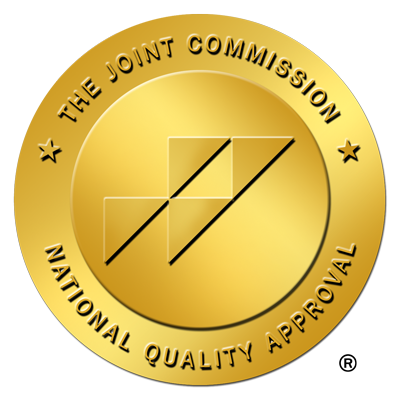Anxiety Disorders
When a person receives a diagnosis for an anxiety disorder, it means more than they worry too much about things they don’t need to worry about. People with clinical anxiety experience negative emotions like fear and dread when thinking about even the most basic daily tasks. Anxiety can complicate activities most of us consider essential, but with effective, evidence-based treatment, it’s possible to manage the disruptive symptoms of anxiety.
Treatment for Anxiety at BACA:
Developing Practical Skills in a Safe, Encouraging Environment
We understand how debilitating anxiety can be for children, adolescents, and young adults. It’s hard to describe to people without anxiety what it’s like to have real, clinical anxiety. Whereas a high school student without clinical anxiety might worry about a test and have butterflies walking into the classroom, a high school student with clinical anxiety might experience emotions so intense they’re unable to leave their bedroom the morning of the test.
It’s not that they choose not to get ready and go to school,
it’s that their anxiety literally prevents it from happening at all.
That’s why people with a clinical anxiety diagnosis need evidence-based support provided by skilled, experienced mental health professionals. Extend the example above to almost any activity, and you’ll understand what people with anxiety experience every day: disruptive symptoms that make daily living extremely challenging.
At BACA, We Collaborate With You to Build the Tools and Skills You Need to Manage the Symptoms of Anxiety
We have decades of experience adapting therapeutic techniques to meet the specific needs of children, teens, and young adults with anxiety. Some patients need medication. For others, behavioral therapy works best. And for some, a combination of medication and therapy is the best path forward. At BACA, we create a treatment plan that considers the unique needs of each individual and offers the greatest chance of treatment success.
What is Anxiety?
The American Psychological Association (APA) defines anxiety this way:
“Anxiety is an emotion characterized by apprehension and somatic symptoms of tension in which an individual anticipates impending danger, catastrophe, or misfortune.”
In many cases, anxiety is a survival advantage. It warns us of impending danger and incites us to take action to stay safe. However, anxiety can also appear in the absence of impending danger. This type of anxiety is not an advantage: it’s a mental health disorder, called an anxiety disorder. According the National Association on Mental Illness (NAMI), all anxiety disorders share one unifying trait:
“Persistent, excessive fear or worry in situations that are not threatening.”
There are various types of anxiety disorders. While each includes the characteristic worry or fear in situations that are not dangerous or threatening, each type has a specific set of signs and symptoms.
Types of Anxiety Disorders
The most common types of anxiety disorder include:
- Generalized anxiety disorder (GAD)
- Social anxiety disorder (SAD)
- Separation anxiety
- Agoraphobia
- Panic disorder
- Specific phobias
Signs and Symptoms of Anxiety Disorders
NAMI describes specific symptoms to watch for:
Emotional:
- Fear of typical, day-to-day situations
- Constant restlessness
- Persistent irritability
- Habitually predicting the worst outcome in any situation
- Excess tension or jumpiness
Physical:
- Racing heart/shortness of breath
- Headaches, insomnia, fatigue
- Twitching, sweating, or tremors
- Nausea
- Frequent trips to the bathroom (diarrhea or frequent urination)
Consequences of Untreated Anxiety
The consequences of untreated anxiety include:
- Difficulty maintaining stable relationships with family members
- Difficulty forming and maintaining stable relationships with peers
- Turbulent relationships with spouses/romantic partners
- Decrease in work performance
- Decrease in academic performance/ambition/attainment
- Difficulty seeking and maintaining work/employment
- Increased alcohol/substance use
- Suicidal ideation/suicidal behavior
- Non-suicidal self-injury/self-harm
Treatment for Anxiety: Therapy and Medication
Evidence indicates the most effective way to treat anxiety disorders is with a combination of therapy and medication.
At BACA, the therapeutic approach we use for patients with anxiety is cognitive behavioral therapy (CBT):
- Cognitive-Behavioral Therapy (CBT): CBT helps patients learn how thoughts are connected to behavior, and how habitual patterns of thought can lead to habitual patterns of behavior. Therapists help patients recognize patterns of thought that interfere with their life or prevent them from achieving their goals and replace them with patterns of thought that enhance their life and promote success. They can then direct these thoughts toward increasing positive behavior, and reducing behaviors that interfere or interrupt their full participation in work, school, family, and social life.
In addition, evidence shows two types of medication can effectively reduce symptoms of anxiety:
- Anti-depressants
- Anxiolytics (anti-anxiety medication)
At BACA, an effective, evidence-based treatment plan for a person with anxiety – child, adolescent, or adult – includes most, but not all of the following:
- Education about anxiety symptoms and anxiety treatment
- Behavioral therapy, such as CBT, DBT, or ERPT
- Prescription medication
- Group counseling
- Family counseling
- Complementary/expressive therapies
At BACA, we take the time to learn about each patient and understand what works for them. We design a treatment plan the leverages strengths, shores up challenge areas, and gives each individual the greatest chance of managing the symptoms of anxiety and achieving stable, sustainable, long-term recovery.






